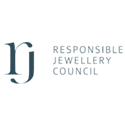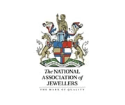As the New Year unfolds, gold’s lustre seems to be tested by the currents of the global economy and investor sentiment. Traditionally revered as a safe haven, gold’s recent price fluctuations and innovative investment methods are drawing attention from both enthusiasts and investors. This post delves into the recent trends affecting gold’s status, offering insights into what the future holds for this precious metal.
Gold Price Plummets Amid Cautious Mood
In recent weeks, the gleam of gold has dimmed, casting a shadow of uncertainty over its status as a steadfast investment. After achieving an impressive eight-month high in December, the price of gold has unexpectedly tumbled. This descent is largely attributed to a cautious mood permeating the market, as investors hold their breath in anticipation of the Federal Open Market Committee (FOMC) minutes and forthcoming US economic data.
The Federal Open Market Committee (FOMC) is a branch of the Federal Reserve System, which is the central banking system of the United States. It’s arguably the most influential component of the Federal Reserve, given its role in steering national monetary policy. The primary function of the FOMC is to oversee the nation’s open market operations, which involve the buying and selling of government securities, such as Treasury bonds. These actions directly influence interest rates and money supply, which in turn affect economic activity, employment, inflation, and the overall health of the U.S. economy.
The apprehensive atmosphere is palpable, with stakeholders speculating on interest rate trends, inflationary pressures, and other macroeconomic factors that directly influence the stability and allure of gold.
The downturn reflects a broader sentiment of caution, as investors recalibrate their portfolios and strategies in light of potential policy shifts and economic revelations. Analysts are closely monitoring the situation, suggesting that the price of gold could continue to exhibit volatility in the short term. This period of fluctuation is reminiscent of gold’s historical responsiveness to global economic tremors, reaffirming its role as a barometer of market sentiment.
HSBC Projects Gold to Average $1,825 in 2024
Despite the immediate setbacks, some financial institutions like HSBC maintain a bullish outlook for gold. Predicting an average of $1,825 per ounce in 2024, HSBC’s projection offers a glimmer of hope for investors. This optimism is hinged on the potential for gold to experience stronger growth, depending on the unfolding economic landscape. The bank’s forecast is rooted in a comprehensive analysis of macroeconomic factors, including inflation rates, currency valuations, and geopolitical tensions, all of which traditionally influence gold’s appeal as a safe haven.
Moreover, HSBC’s projection takes into account the evolving dynamics of the gold market, recognizing the impacts of technological advancements in trading and the shifting regulatory environment. The anticipated average price reflects not just a rebound from recent dips but also an adjustment to a more stabilized economic environment where gold continues to play a critical role in investment portfolios.
The forecast also underscores a belief in the enduring allure of gold amidst financial volatility. With its historically negative correlation to equities and reputation as a hedge against inflation, gold’s intrinsic value is expected to shine through, even as markets navigate through uncertain terrains. Thus, for savvy investors and gold aficionados, HSBC’s projection of $1,825 per ounce stands as a beacon, guiding strategies and inspiring confidence in the precious metal’s continued relevance and potential for prosperity in 2024.
US States Move to Reclassify Gold and Silver
In a fascinating twist to the monetary saga, a notable number of US states, including stalwarts like Texas and Wyoming, are actively considering legislation that would reclassify gold and silver as legal tender. This legislative renaissance is driven by a desire to reintroduce these precious metals as fundamental, trustworthy components in financial dealings, harkening back to their historical role in commerce and wealth preservation.
The reclassification suggests a growing discontent with traditional fiat currency’s volatility and a yearning for more stable, intrinsic value that gold and silver have historically provided. Advocates argue that by adopting gold and silver as legal tender, states can offer their citizens a more stable and reliable alternative, potentially mitigating the risks associated with inflation and currency devaluation.
Furthermore, this movement isn’t just a nostalgic return to the gold standard era; it’s a forward-looking strategy aimed at diversifying states’ financial ecosystems. By empowering citizens to use gold and silver in transactions, these states are paving the way for a more resilient economy capable of withstanding the caprices of global financial markets.
However, this isn’t just about economics. It’s a statement of autonomy and a nod to sovereignty, as states exercise their right to offer alternatives to the federal monetary system. The symbolism of gold and silver, with their deep roots in American economic history, adds a layer of cultural resonance to this initiative.
As this trend gains momentum, it could signal a shift in how Americans perceive and utilize money, offering a dual-currency system where paper money and precious metals coexist. This renaissance of gold and silver could redefine their role not just as investment assets but also as viable, everyday mediums of exchange, reaffirming their timeless value in the modern financial world.
Major Retailers Offer Gold Bars
In an intriguing nod to consumer demand and economic sentiment, major retailers like Walmart and Costco have ventured into the realm of precious metals, offering gold bars in select stores. This move is not merely a new retail offering but a reflection of a deeper, more profound shift in consumer behavior and investment strategies. As individuals grow increasingly wary of volatile markets and look for tangible assets, gold emerges as a preferred choice for its enduring value and security.
These retail giants are tapping into this sentiment, making gold bars more accessible to the general public. By doing so, they are democratizing the process of investing in gold, traditionally seen as the preserve of the affluent or the avid collector. The availability of gold bars in familiar, accessible retail environments underscores a significant trend: the integration of investment-grade gold into everyday life and the embrace of physical assets amid economic uncertainty.
Moreover, this trend signals a shift in the perception of gold from an archaic relic to a relevant and practical component of a diversified investment portfolio. The presence of gold bars on shelves alongside household items encapsulates the blend of tradition and modernity, stability, and innovation that gold represents in today’s uncertain economic climate.
HSBC Becomes First Global Bank to Offer Tokenized Gold
In an unprecedented move, HSBC has positioned itself at the forefront of financial innovation by becoming the first global bank to offer tokenized gold. This groundbreaking development is set to redefine the paradigms of gold investment, utilizing cutting-edge blockchain technology. Through this platform, investors are now empowered to buy and sell fractional ownership of gold bars, a method that drastically enhances the fluidity and accessibility of gold as an asset. This tokenization process dematerialise physical gold into digital tokens, each representing a specific weight and purity of gold, thereby ensuring authenticity and security.
The tokenized gold platform by HSBC is not just a novel investment avenue; it’s a testament to the evolving relationship between traditional assets and modern technology. This fusion aims to mitigate some of the traditional barriers associated with gold investment, such as storage and high entry costs, making it a more viable option for a wider range of investors. Additionally, the immediacy and transparency provided by blockchain technology offer a level of efficiency and trust that is unprecedented in the realm of precious metals.
The bank’s initiative also mirrors a growing trend in the financial world – the shift towards digital assets and currencies. As investors become more tech-savvy and seek greater control and flexibility in their investments, the demand for such innovative solutions is expected to rise. HSBC’s venture into tokenized gold could very well be the catalyst for more financial institutions to explore similar offerings, potentially leading to a more diversified and dynamic market for gold investment.
For the savvy investor or the curious gold enthusiast, this move by HSBC opens up a new horizon of possibilities. It represents not just an investment in gold but in the future of how assets are perceived, acquired, and traded. As the landscape of investment continues to evolve with technology, HSBC’s tokenized gold platform stands as a beacon of progress, offering a blend of tradition and innovation that promises to keep gold’s allure shining for years to come.
As we stand at the cusp of a new year, the path of gold continues to unfold with a blend of old allure and new dynamics. The journey of this precious metal is emblematic of the broader economic sentiments and innovations shaping our world. For those enchanted by its eternal shine and for investors seeking a bastion against the unpredictable tides of the market, gold remains a focal point of strategies and conversations.
The recent dips and dives in gold prices are not just mere numbers but reflect the cautious whispers of the market, responding to global economic pulses. Yet, amidst these undulations, the enduring value of gold as a safe haven and a symbol of wealth persists. The projections and moves by significant banks and states reinforce the belief in gold’s unwavering status and its potential to adapt and thrive in diverse economic climates.
The entry of major retailers into the gold market and the innovative tokenization of gold by leading banks are not merely trends but testaments to gold’s evolving narrative. These developments speak to a growing desire for tangible security and innovative flexibility, catering to a wide array of preferences and needs.
For investors and gold enthusiasts alike, staying informed and adaptable will be key to harnessing the potential of this timeless asset. Whether gold’s future shines bright or dims, its status as a coveted commodity and investment option remains unchallenged, continuing to capture the imagination of people worldwide.
Recent articles
The Prospects for Gold in 2024: A Gleaming Future?
The Significance of Gold at Christmas















